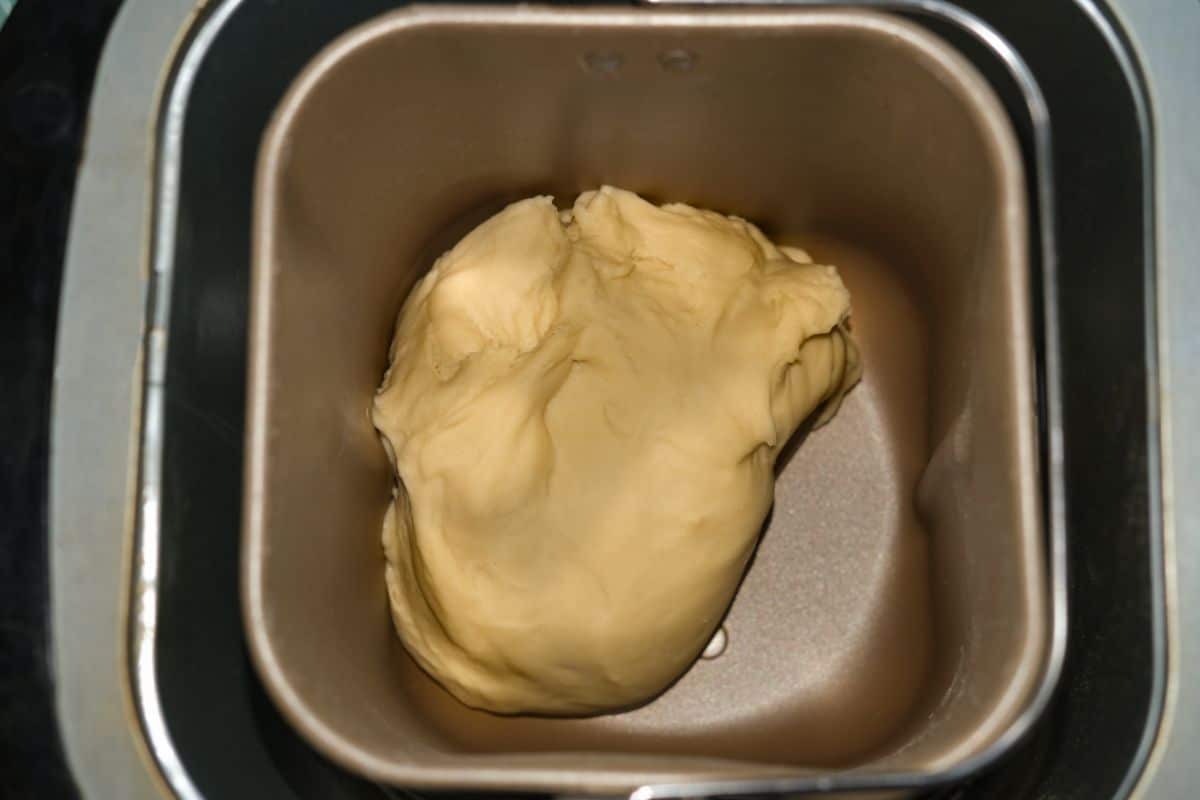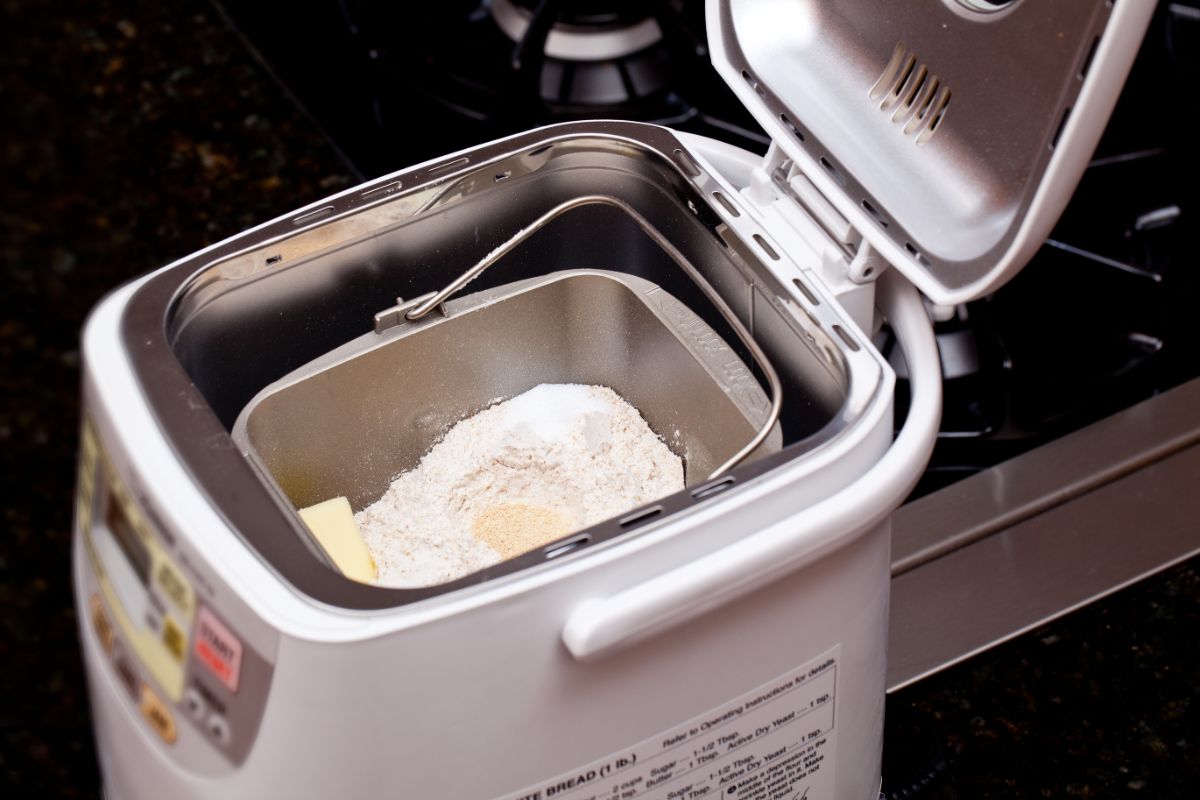Kneading refers to the process of developing dough into an elastic ball. As the flour mixes with the ingredients, the gluten strands are formed. If you knead the dough by hand, the process will be messy and tough on your body. This is where a bread machine comes in. It’s completely automated and is much faster.

So, how long does a bread machine knead dough? A bread machine will knead the dough for around 8-10 minutes and it will depend on the bread recipe. Machine kneading is a shortcut to making tasty bread. Thankfully, most high-end models can mimic the movements of human hands.
Each machine has two paddles that rotate to mix the dough while incorporating the ingredients. To achieve the expected results, you should insert the ingredients as requested by the recipe.
Typically, as you knead the dough by hand you can’t do anything else. But with a bread maker, you can work on other projects in your kitchen. This saves you lots of time and energy. Before you start kneading, you should set the right cycle and close the lid. When the bread machine has finished kneading, it will flash or beep.
While still in the kneading phase, you can tell whether the dough is under-kneaded. It’s usually floppy, shaggy, and tears easily. The solution to this problem is to keep kneading.
Unfortunately, you can’t tell whether the dough is over-kneaded when using a machine. To eliminate doubts out of the equation, you should check your dough every 2-3 minutes.
Continue kneading until the dough forms a ball. This is particularly true if you’re making a recipe that you’ve not made before. The over-kneaded dough has little gluten to give because it’s too tight.
Bread machine vs. hand kneading
There are many kneading methods you can use to suit your personal preferences. When making bread, you should knead the dough until it comes together.
This helps to strengthen the gluten in the dough. The easiest method to work on your dough is using a bread machine. Because it doesn’t tire, it will maintain the same pace until the work is done. This method is fast and has no mess, so you won’t have to deal with a dirty countertop.
Specialty flours like whole wheat require kneading time of about 5 minutes. This is because there’s no gluten. Baking experts recommend that you knead the dough for 2-3 minutes under low setting and another 4-5 minutes on a higher speed.
Keep in mind that if you over-knead the dough, it will become sticky making it difficult to handle. Most bread machines produce about 100 rpm on low speed and 200 rpm on high speed.
Kneading by hand is a tedious process that can take 10-12 minutes to complete. Since bread flour contains higher gluten than all-purpose flour, it needs longer kneading time.
When you add all the ingredients on a large bowl, you should use a spatula or a wooden spoon to mix them. Once the ingredients are mixed, you can use your hand to turn the dough.

This should be done on a lightly-floured countertop. Work the dough by folding it over itself and press with the heels of your hands.
Sometimes, the process can take twice as much time as the bread machine. Although you don’t have to invest in a machine with hand kneading, the process will take a little longer and can be a messier.
It’s quite easy to test if the dough is adequately kneaded. Just tear walnut size dough and hold it between your hands. If it feels like a balloon before blowing up, continue kneading.
When the dough is well kneaded, it won’t tear easily and will have a translucent membrane. If you knead the dough perfectly, it will spring back when poked with a finger.
Generally, the dough will get softer after 6-7 minutes. For consistency in time, you should take care of your machine and it will do the hard work for you. Proper kneading allows the yeast dough to expand as it rises.
How long should you leave the dough in the bread machine?
Professional bakers will tell you that you should never leave the dough in the machine for too long. Bread dough should be allowed to rest for about 30 minutes before you shape it.
Of course, it won’t be an issue if you allow it to rest for longer. Don’t leave it for more than 12 hours as the fermentation process can affect the flavor of the bread.
The precise time will also depend on how large the bread machine is. If there’s plenty of space, you can give it enough time to rise there without taking it out. However, if you think the space is too small you should remove it from the machine and place it on a large bowl.
One way of checking whether the dough has risen enough is making an indentation with your fingers. If the indentation disappears, the dough needs more time to rise. Since bread making is a skill that requires practice, you should not be discouraged if the first dough is not perfect.
The purpose of machine kneading is to strengthen the gluten strands. Another way of checking whether the dough is ready is by maintaining its shape.
If it keeps the shape without sagging, then the gluten is ready. As you do the kneading, the dough gains a smooth texture and is somewhat tacky.
Most recipes require that you knead the dough until it becomes soft and smooth. A good kneading machine will do the job in about 8 minutes. Finally, the ingredients you use will affect the time you take to knead. Be sure to balance the eggs, oil, salt, sugar, etc.
Bread machines with an exact amount of ingredients will do all the work for you. Some come with `dough only’ setting. While there are so many models to choose from, those with dual paddles are the best. They push the dough back and forth which saves time. You can pop everything into the machine and let it do the work or use it to knead the dough and transfer it to a conventional oven.
The bottom line
Homemade bread is a real delight than the ones bought from the stores. While some people are still stuck to the old-fashioned hand-kneading, a bread machine brings comfort and convenience. Since the most difficult part in dough making is kneading, the machine will do all the work.
Proper kneading distributes ingredients, incorporates air, and gives the bread yeasted chew. With an automated machine, the kneading process should not take more than 8 minutes. It’s time you forget the messy hand kneading and resort to a bread machine that will do all the work for you.
